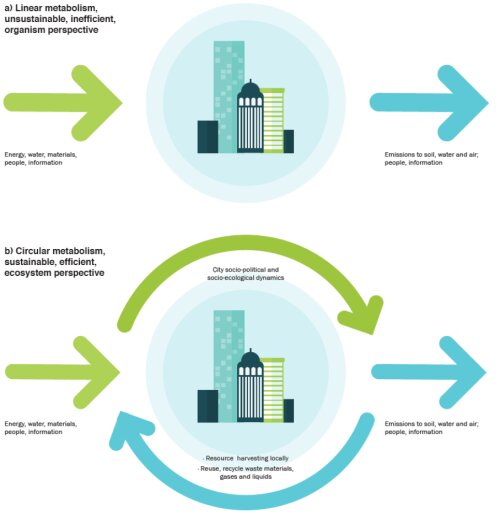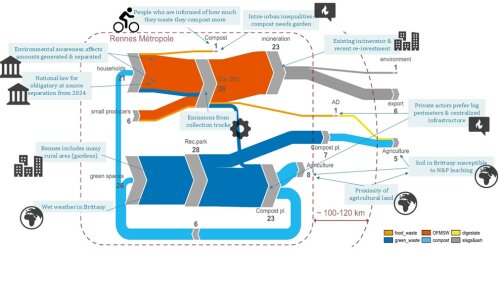Urban Metabolism
We often see cities as something separate, even the opposite, of nature. Yet cities are embedded in ecosystems, both local and very far away ones. At the local level, rapid urbanization affects local habitats by contributing to increased noise, light, and air pollution, and increased temperatures through the urban heat island effect. Globally, cities contribute 2/3 of global GHG emissions1, they consume up to 75% of the natural resource consumption and produce 50% of all the waste2. Most of the resources needed to house and transport city residents, to build and maintain infrastructure, and to run the urban economies, are sourced and transported from elsewhere; similarly, related emissions often happen far way from the city. These processes affect and change landscapes and communities that most city residents may never see. Analyzing these resource flows and emissions, assessing their impacts on ecosystems and communities, and studying the power dynamics that dictate their distribution, are the cornerstones of imagining and creating better cities in the future.

Figure 1: Cities, resource use, and emissions: linear and circular urban metabolisms. [Source: Musango, J.K., Currie, P. & Robinson, B. (2017) Urban metabolism for resource efficient cities: from theory to implementation. Paris: UN Environment]
The research ambition is to facilitate urban sustainability transitions, through retrospective and prospective urban metabolism studies. We analyze current and past trends in resource use and emissions in, and related to, cities, with an eye toward the future. With a robust background on studying the flows of bio-based resources, especially food, nutrients, and organic waste, and a focus on justice in intra-city and city-hinterlands relationships, we aim to tackle questions such as:
· What will be the impact of sufficiency measures in urban resource use and in peri-urban food systems? What are the opportunities and barriers to implement these measures?
· What are the drivers of resource use in specific cities and neighbourhoods? What are the implications of these drivers for just sustainability transitions?
· How to transition to just urban metabolisms, making sure that all stakeholders (human and non-human) are taken into account, and that benefits and burdens are fairly distributed across scales?

Figure 2 : Example of combining the study of material flows with the analysis of their drivers; Organic waste flows and drivers in Rennes Metropolitan Area in 2019 [source: Papangelou et al. (2023) doi: 10.1111/jiec.13435]
1https://www.ipcc.ch/report/ar6/wg3/downloads/outreach/IPCC_AR6_WGIII_FactSheet_Urban_Systems.pdf
2https://iucn.org/resources/issues-brief/cities-and-nature